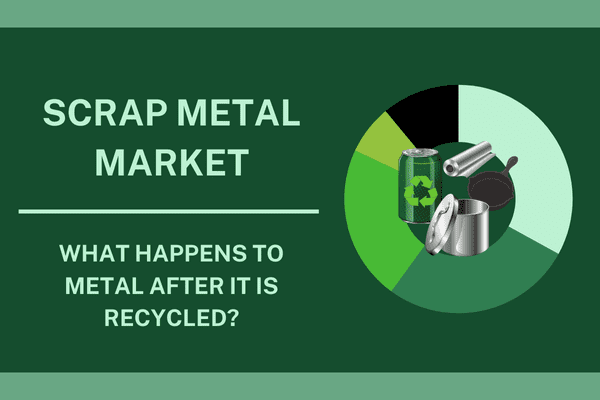
U.S. Steel, the integrated steel producer headquartered in Pittsburgh and the world’s 24th largest steel producer, just made a major announcement: they’re hiring again.
That may not sound significant in an economy that’s booming and with a national unemployment rate of just 3.8 percent, a historic low. But anyone who has followed the steel industry knows that the past decades have been rough on steel manufacturers. Since the 1960s, in fact, the steel industry has lost 400,000 jobs.
The fortunes of this once thriving sector of the economy are demonstrating strength again – U.S. Steel just announced it was restarting the second of two blast furnaces at its plant in Granite City, Ill., bringing on 300 new workers. The company had previously announced it would reopen the first furnace at the facility, creating 500 jobs in the process.
This year, the steel industry is expected to solidly benefit from growing demand in the U.S. and emerging markets like India. The hiring comes in the wake of President Donald Trump’s steel tariffs imposed in March on steel and aluminum imports.
But while the steel industry cheered, others raised concerns. Waivers were initially granted to numerous U.S. allies, but the Trump administration just imposed a 25 percent tariff on steel imports and a 10 percent tariff on aluminum imports from Canada, Mexico, and the European Union.
Not surprisingly, those nations are threatening retaliatory action. It’s become a high-stakes game that’s left economists wondering if short-term gains from the tariffs could produce long-term worries.
And there are also questions about what the impact will be for the scrap metal recycling industry, which has been taking a wait-and-see approach to the tariffs.
How Will Tariffs Impact the Steel Industry?
There’s no question that the steel industry has been struggling for years – a key reason why President Trump decided to set import tariffs.
David Burritt, the CEO of U.S. Steel, announced that the restarting of the two blast furnaces at Granite City Works was in response to “growing demand” for steel. U.S. Steel has praised the tariffs, calling them good for business, and an approach that helps level the playing field for domestic steelmakers hurt by cheap foreign steel dumped into the U.S. market.
That growing demand Burritt cited is reflected in the fact that steel prices have gone up nearly 38 percent this year, and shares of U.S. Steel have risen more than 5 percent.
A new report by Trade Partnerships Worldwide, an economic consulting firm, concluded that the president’s tariffs would boost steel and aluminum manufacturing industry jobs, creating up to 27,000 new positions over the next three years.
If that sounds like a winning strategy, there are counter views as well.
The Trade Partnerships Worldwide report cautioned that tariffs against major U.S. allies like Canada, Mexico, and the European Union could end up costing this country 430,000 jobs throughout the rest of the U.S. economy, as tariffs imposed by other nations would impose new costs on American businesses, resulting in job losses.
Their report concludes that for every steel and aluminum job that’s gained, as many as 16 jobs in other industries could be lost. That’s particularly true, they concluded, for industries that consume a lot of steel, such as American auto manufacturers.
Steel has traditionally been the material of choice for automakers worldwide, allowing auto manufacturers to build cars at relatively low costs compared to using other materials.
Canada and Mexico are the top two U.S. exporters of vehicles to the U.S., which raises concerns about the impact of the tariffs.
How Are Other Nations Responding?
Nations impacted by the tariffs have responded swiftly. Japan called the move “regrettable,” and when Japan didn’t win an exemption, leaders filed a notification with the World Trade Organization stating that Japan – facing an estimated $415 million loss from the 25 percent tariff on steel — reserves the right to impose counter-measures. The U.S. is the biggest market for Japanese carmakers.
Japan isn’t alone. Germany has also spoken out against the tariffs, and EU leaders followed up by issuing a ten-page list of tariffs on U.S. goods that included Harley-Davidson motorcycles and bourbon.
Canada’s government also announced that it would act to protect its steel and aluminum sectors from U.S. tariffs. Canada retaliated by proposing levies on $16 billion worth of U.S. exports that would take effect on July 1.
No one is certain how these moves will impact sectors of the U.S. economy, which at the moment is experiencing record-low unemployment levels and healthy job growth.
How Will This Impact Steel Recyclers?
The scrap metal recycling industry also plays a critical role in the economy and the manufacturing sector. Scrap metal recyclers like GLE Scrap Metal perform environmentally-friendly processing and recycling of all base and precious metals. Once they purchase scrap, it gets processed and re-integrated. GLE Scrap Metal then supplies domestic mills and global end-users with wide ranges of raw commodities to be transformed into new product.
Using recycled metals is environmentally friendly and helps preserve more of our natural resources since it doesn’t require mining the Earth for virgin ore to make new metals out of. Using recycled metals also helps hold down the cost of making a wide range of new products, including products made from steel and aluminum.
The tariffs come at a time when there’s strong global demand for steel, offering recyclers an opportunity to continue selling their recycled metals. There are expectations that the steel tariffs, and the growth in the steel industry, could generate additional revenue for recycling programs.
Some Canadian recyclers, though, are already worried that the foreign steel and aluminum imports will impact demand for scrap metal and finished steel that gets sold back into the U.S. Some Canadian recyclers are indicating that they may refocus their efforts on the domestic market instead.
For example, some Canadian metal companies don’t sell directly to the U.S. But in many instances, their customers do, in the form of steel and aluminum manufactured with its products. So it’s not clear how they will be impacted in the long run.
So for now, the recycling industry is in a wait and see position, watching as the steel industry gets stronger and global demand for steel does as well.
And they’re also hoping that trade policies don’t turn into a long-term albatross on the economy, either in the U.S. or internationally, as some economists fear.
Conclusion
The steel industry’s growing strength is a welcomed relief for workers in this field, and this strength is likely to be felt by the scrap recycling industry as well. In fact, the metal recycling market is projected to grow from $277 billion in 2015 to $406 billion by 2020, boosted by accelerated urbanization in many nations, the growth of major infrastructure projects, and increasing industrialization in a booming economy. That’s expected to contribute to a rapidly increasing need for metal products, and it’s simply too early to say how steel and aluminum tariffs might change the overall picture.
But in the meantime, we do know there is a constant need for scrap metal that can be recycled, which is why it’s important to bring all scrap metals to a recycler like GLE Scrap Metal, which is a full-service, all-in-one recycling company with operations throughout the U.S.
GLE Scrap Metal recycles millions and millions of pounds of scrap metal each year and employs an experienced logistics team that handles its expansive fleet of trucks as well as equipment for jobs of any size, at any facility.
To learn more, call GLE Scrap Metal at 855-SCRAP-88.


